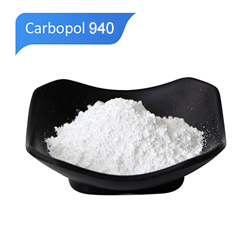In the dynamic landscape of food processing, TG enzyme (Transglutaminase) has emerged as a revolutionary ingredient, transforming the way food products are developed and manufactured. This blog post will explore the core application scenarios of TG enzyme in food processing, highlighting its significance and impact on various food categories.
One of the primary applications of TG enzyme in meat and poultry processing is its ability to enhance gelation and elasticity. In products like sausages, hams, and restructured meats, TG enzyme catalyzes the cross - linking of proteins. This cross - linking forms a strong protein network, similar to the natural structure of meat fibers. As a result, the final product exhibits improved texture, with a more firm and elastic bite that mimics the texture of high - quality, whole - cut meats. This not only enhances the consumer experience but also allows manufacturers to create value - added products from lower - grade meat cuts.
TG enzyme also plays a crucial role in increasing the yield of meat products. By promoting protein cross - linking, it helps to trap and retain moisture within the meat matrix. This means that during cooking or processing, there is less water loss, resulting in a higher - weight final product. For example, in the production of cooked ham, the use of TG enzyme can lead to a significant increase in yield, reducing production costs while maintaining product quality. Additionally, the improved moisture retention contributes to a juicier and more flavorful product, which is highly desirable among consumers.
In the production of yogurt and other fermented dairy products, TG enzyme can be used to modify the texture. Yogurt made with TG enzyme often has a thicker, creamier consistency. The enzyme cross - links the milk proteins, creating a more stable gel structure. This not only improves the mouthfeel of the yogurt but also helps it to resist syneresis, the separation of whey from the curd. As a result, the yogurt has a longer shelf - life and a more appealing appearance. Moreover, the enhanced texture can allow manufacturers to reduce the use of stabilizers and thickeners, appealing to health - conscious consumers who prefer products with fewer additives.
In cheese production, TG enzyme can be used to accelerate the ripening process and improve the texture of the cheese. By cross - linking the casein proteins, it helps to form a more homogeneous and firm cheese structure. This can lead to a reduction in the time required for cheese to reach its optimal ripeness, saving production time and costs. Additionally, the modified texture can result in a cheese that is more resistant to shredding and melting, making it ideal for applications in pizza and other processed cheese products.
TG enzyme can be added to bread and other bakery doughs to strengthen the gluten network. Gluten is responsible for the elasticity and structure of the dough. By catalyzing cross - links between gluten proteins, TG enzyme improves the dough's mechanical properties. This results in a dough that is more resistant to stretching during processing, reducing the likelihood of breakage. As a consequence, the final baked product has a better volume, with a more uniform crumb structure and a longer shelf - life. The bread remains fresher for a longer time, as the improved structure helps to retain moisture.
In addition to its effects on dough structure, TG enzyme can also contribute to the development of flavor and aroma in bakery products. The cross - linking of proteins can influence the Maillard reaction, a chemical reaction that occurs during baking and is responsible for the characteristic browning and flavor development of bread. By modifying the protein structure, TG enzyme can enhance the Maillard reaction, leading to a more intense and desirable flavor profile in the final baked product.
Get Quotes
 Food Grade Sodium Hyaluronate
Food Grade Sodium Hyaluronate Cross-linked Sodium Hyaluronate
Cross-linked Sodium Hyaluronate Cosmetic Grade Sodium Hyaluronate
Cosmetic Grade Sodium Hyaluronate D-panthenol
D-panthenol γ-Polyglutamic Acid
γ-Polyglutamic Acid Allantoin
Allantoin Alpha Arbutin
Alpha Arbutin Beta Arbutin
Beta Arbutin Kojic Acid
Kojic Acid Kojic Acid Dipalmitate
Kojic Acid Dipalmitate 3-o Ethyl Ascorbic Acid
3-o Ethyl Ascorbic Acid Ascorbyl Glucoside
Ascorbyl Glucoside β-Nicotinamide Mononucleotide(NMN)
β-Nicotinamide Mononucleotide(NMN) β-Nicotinamide Mononucleotide(NMN)
β-Nicotinamide Mononucleotide(NMN) Nicotinamide Adenine Dinucleotide(NAD+)
Nicotinamide Adenine Dinucleotide(NAD+) Glutathione
Glutathione Coenzyme Q10
Coenzyme Q10 Pyrroloquinoline Quinone(PQQ)
Pyrroloquinoline Quinone(PQQ) Chondroitin Sulfate
Chondroitin Sulfate Methyl Sulfonyl Methane
Methyl Sulfonyl Methane Glucosamine Hydrochloride
Glucosamine Hydrochloride Glucosamine Sulfate Potassium Chloride
Glucosamine Sulfate Potassium Chloride N-Acetyl-D-Glucosamine
N-Acetyl-D-Glucosamine Vitamin K2
Vitamin K2
















































